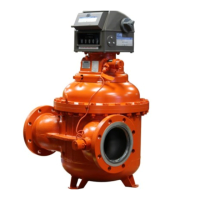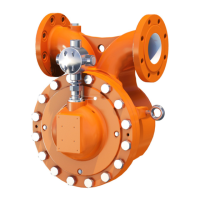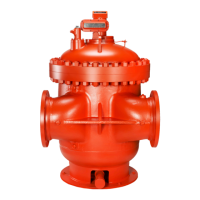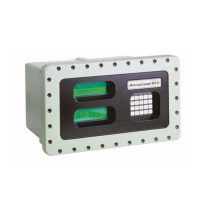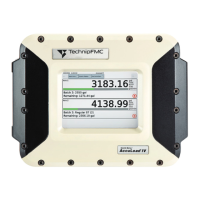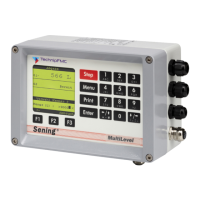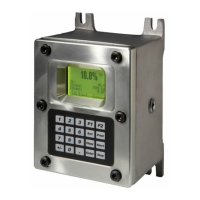Network Meter Block Installation, Operation, & Maintenance Manual
Monitoring and Configuring the NMB 25
4.3.3.3 Configuring Basic Inputs and Outputs
The Basic I/O tab’s Configure pane enables you to configure your NMB’s inputs and outputs, adjust analog
filtering, and specify MQTT message frame rates. The NMB is functional with the system default values,
except when you are using dual pulse or dual turbine meter pickup transducers.
To configure your NMB’s inputs, outputs, and other basic details, complete the following steps:
1. Select Basic I/O > Configure.
2. In the Pulse Input Mode field, select one of the following options:
• Single—One pulse stream or turbine meter pickup is available.
• Dual—Two pulse streams or turbine meter pickups are available, 90 degrees out of phase. This
option should be selected when you are using dual transducers and need to detect flow direction.
3. The Moving Average for Analog Inputs section enables you to adjust the analog filtering values.
Samples are taken approximate every 60 milliseconds (ms). To change one of these values, do any of
the following steps:
• In the RTD field, type the number of analog-to-digital converter (ADC) samples that should be
averaged to calculate the resistance value.
• In the 4-20 mA Input 1 field, type the number of ADC samples that should be averaged for the Iin1
input on the NMB, which is used to calculate the 4-20 mA value.
• In the 4-20 mA Input 2 field, type the number of samples that should be averaged for the Iin2 input
on the NMB, which is used to calculate the 4-20 mA value.
• In the Pulse A Rate field, type the number of the A pulse input frequency samples that should be
averaged, which is used to calculate the indicated volume (IV) flow rate.
4. The MQTT Message Settings section enables you to adjust how often the NMB sends new values to a
MQTT broker. To change these values, do either of the following steps:
• In the Frame Rate field, type the frequency (in seconds) at which new values should be sent to the
MQTT broker.
• In the Event Message Threshold field, type the minimum alarm severity level (see Table 4: Alarm
Severity Levels) to be displayed in the Event Log. (For instructions on viewing the event log, see
Section 4.3.6.3: Viewing Recent Alarms.)
5. The Digital Input/Output section enables you to configure the logic used to trigger input or send output.
To change these settings, do any of the following steps:
• In the Output #1, #2, and #3 fields, select one of the following functions to be used for each output.
These fields correspond to the Dout1, Dout2, and Dout3 outputs on the NMB.
• Off—The digital output is always de-energized.
• On—The digital output is always asserted.
• MQTT Controlled—The state of the output should be controlled by the MQTT message broker.
(See Appendix A: Data Reference for RESTful and MQTT Schemas for a description of the
message and control.)
Output #3 is limited to the first three of the following functions.
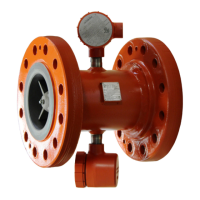
